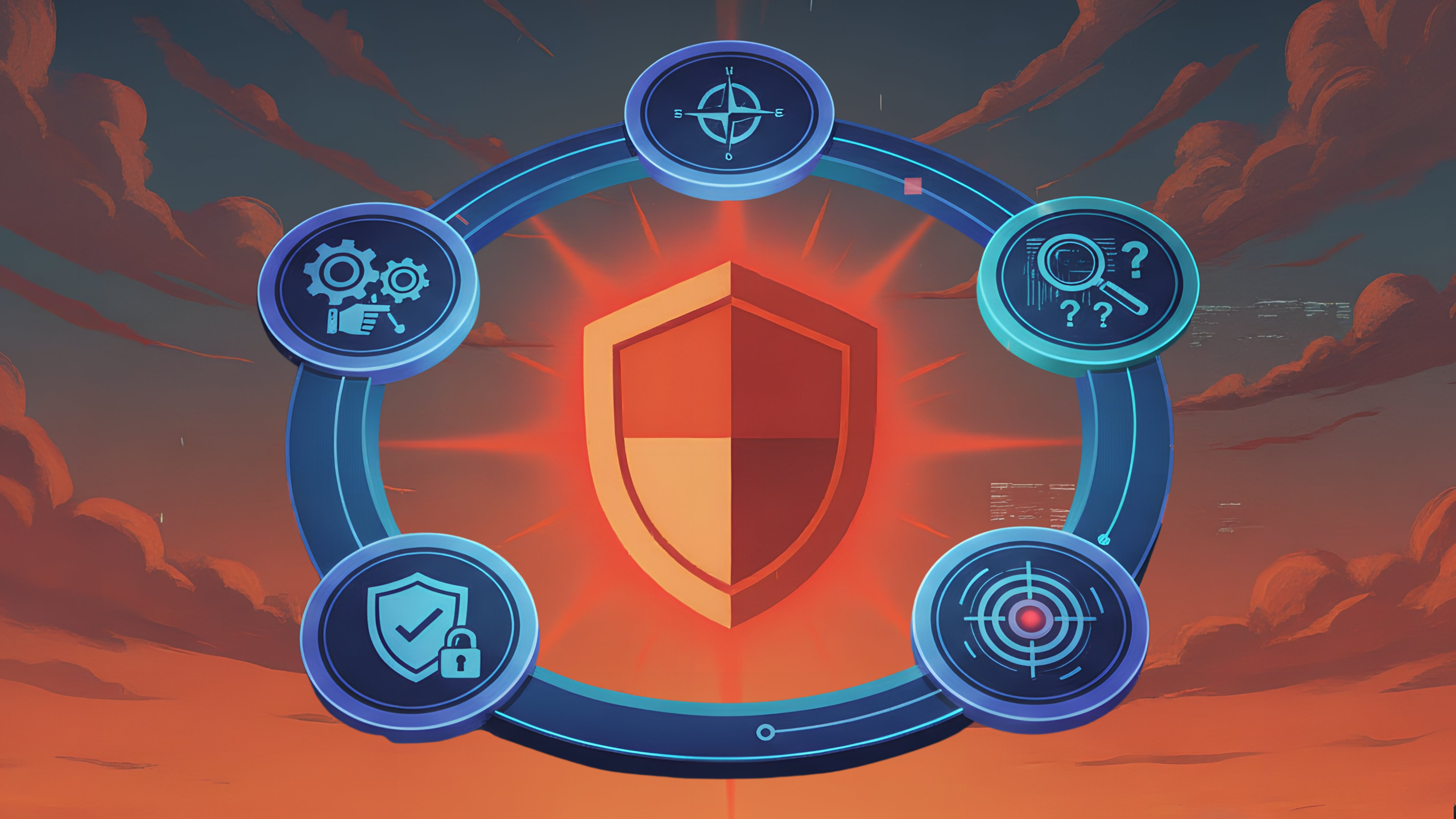So, what exactly is CTEM?
To start with, CTEM is not a specific solution or off-the-shelf product, but rather a methodology and strategic approach to cybersecurity. CTEM stands for Continuous Threat Exposure Management, which means it’s:
* Continuous – Instead of running scans for vulnerabilities at periodic intervals or reacting when a breach occurs, it constantly checks your attack surface. Think of it this way – instead of a policeman making the rounds past your building every couple of hours, you have a policeman stationed out front 24/7.
* Threat Exposure – CTEM constantly identifies weaknesses, and simulates how attackers might break in. Your 24/7 policeman is always checking your doors, windows and gates; and working out where thieves are most likely to come from, before they get there.
* Management – CTEM methodology evaluates, prioritizes, and fixes the most dangerous issues first, for continuous improvement (reduction) of your cyber risks. Your 24/7 policeman will help you fix your broken front door before worrying about an unlocked third story window.
What makes up the CTEM methodology?
The CTEM framework has five connected stages that run in a constant improvement loop:
#1: Scoping: Deciding what to protect. This goes beyond computers and servers and can include things like company social media accounts and systems connected through partners or suppliers.
#2: Discovery: Finding out what you actually have and where the weak spots are. This includes identifying all systems, checking them for problems, and watching for anything that looks unusual.
#3: Prioritization: Focusing on the threats that matter most. Instead of trying to fix everything, CTEM helps decide which risks are most likely to be used by attackers and would cause the biggest harm.
#4: Validation: Testing your defenses to see if they really work. This can include safely simulating attacks to find out which weaknesses are still open.
#5: Mobilization: Making sure improvements actually get done. This means clearing roadblocks, speeding up approvals, and getting fixes rolled out so risks are reduced in the real world.
Why are companies adopting CTEM?
* Attack surfaces change constantly – Modern environments are always shifting – employees work remotely, cloud services come and go, and companies employ the latest SaaS apps. New devices and integrations create new opportunities for attackers. CTEM tracks these changes, so security teams know what’s exposed at any moment.
* Businesses can’t fix everything, so they need to focus – Traditional vulnerability scans produce massive lists, but most issues are low impact. CTEM cuts through all that by identifying the weaknesses that represent real business risk. This helps IT and security teams use their limited time and budget where it counts – fixing issues attackers are most likely to target.
* Regulators and cyber insurers want real proof – These providers are no longer satisfied with annual audits or periodic scans. They expect companies to demonstrate that they are actively reducing cyber risk throughout the year. CTEM provides continuous, evidence-based records of what was found, what was fixed, and how exposure dropped. This makes for better compliance, lowers liability and can even reduce insurance premiums.
* Breaches increasingly come from neglected or unmonitored systems – Many attacks start with things long forgotten – unused remote access, unpatched systems, exposed cloud storage, or applications nobody realized were still online. CTEM focuses on finding the things that fall outside normal monitoring but are still reachable by attackers. By discovering neglected systems and verifying fixes, CTEM closes gaps and prevents breaches.
I have MDR/XDR, why do I need CTEM?
CTEM and MDR/XDR solve two different parts of the cybersecurity problem, which is why the most security-conscious organizations use them together. CTEM is about prevention – continuously finding and reducing the openings attackers could use to get in, prioritizing the most serious issues and verifying fixes.
MDR/XDR is about detection. Even with strong prevention, no environment is perfect. MDR/XDR monitors endpoints, cloud systems, identities, and networks to quickly detect suspicious behavior and stop active attacks before damage spreads.
Together, CTEM and MDR/XDR form both sides of a complete defense. It’s proactive plus reactive, resulting in stronger security and far fewer breaches.
How Guardian can help
Guardian’s ZoneDefense is our holistic offense and defense offering. Our five zones match up to the five stages of CTEM.
#1: Prepare – The best prevention is preparation
#2: Predict – See what the attacker sees and intercept it
#3: Protect – AI-powered external attack surface management
#4: Detect – Find issues before they become threats
#5: Recover – Always have clean data ready for recovery
The foundation of our five-zone framework is a robust governance layer that ensures consistency, compliance, and continuous improvement across all security operations. Don’t rely on yesterday’s defense models. Talk to our team and explore the ZoneDefense platform.
The Guardian difference
Defender and attacker – that’s how Guardian works. Our proactive red and reactive blue teams work together as one defense to hunt threats, identify gaps, and stop breaches before they start. We don’t replace your IT provider or MSP agreement; we work alongside them to provide what they can’t. Why? Because cybersecurity is a hard, ever-changing environment. And anyone who tells you it’s simple, or that they already have you covered as part of other managed services, doesn’t understand today’s high-level threat landscape. We do understand – and that’s the Guardian difference.
